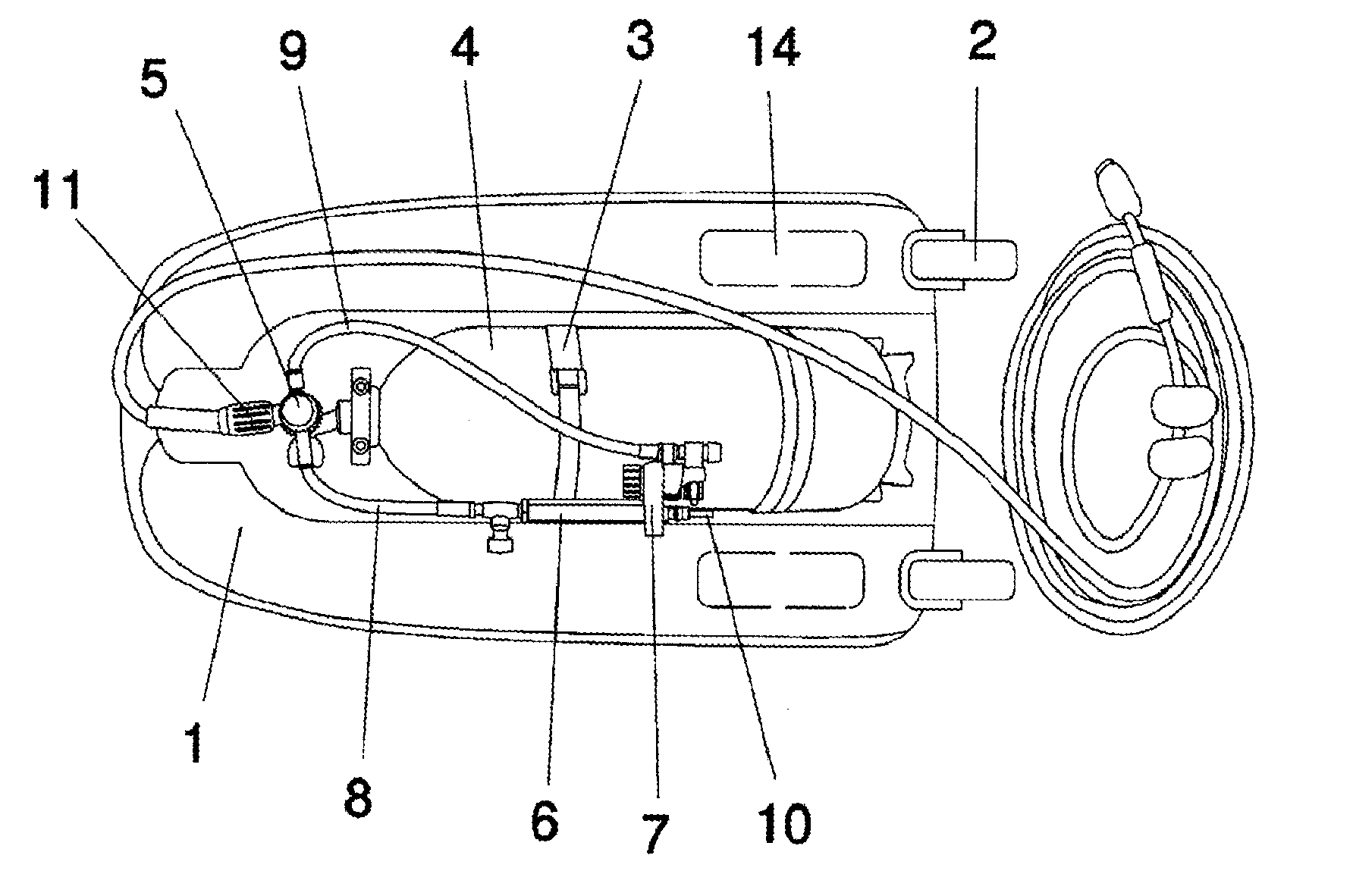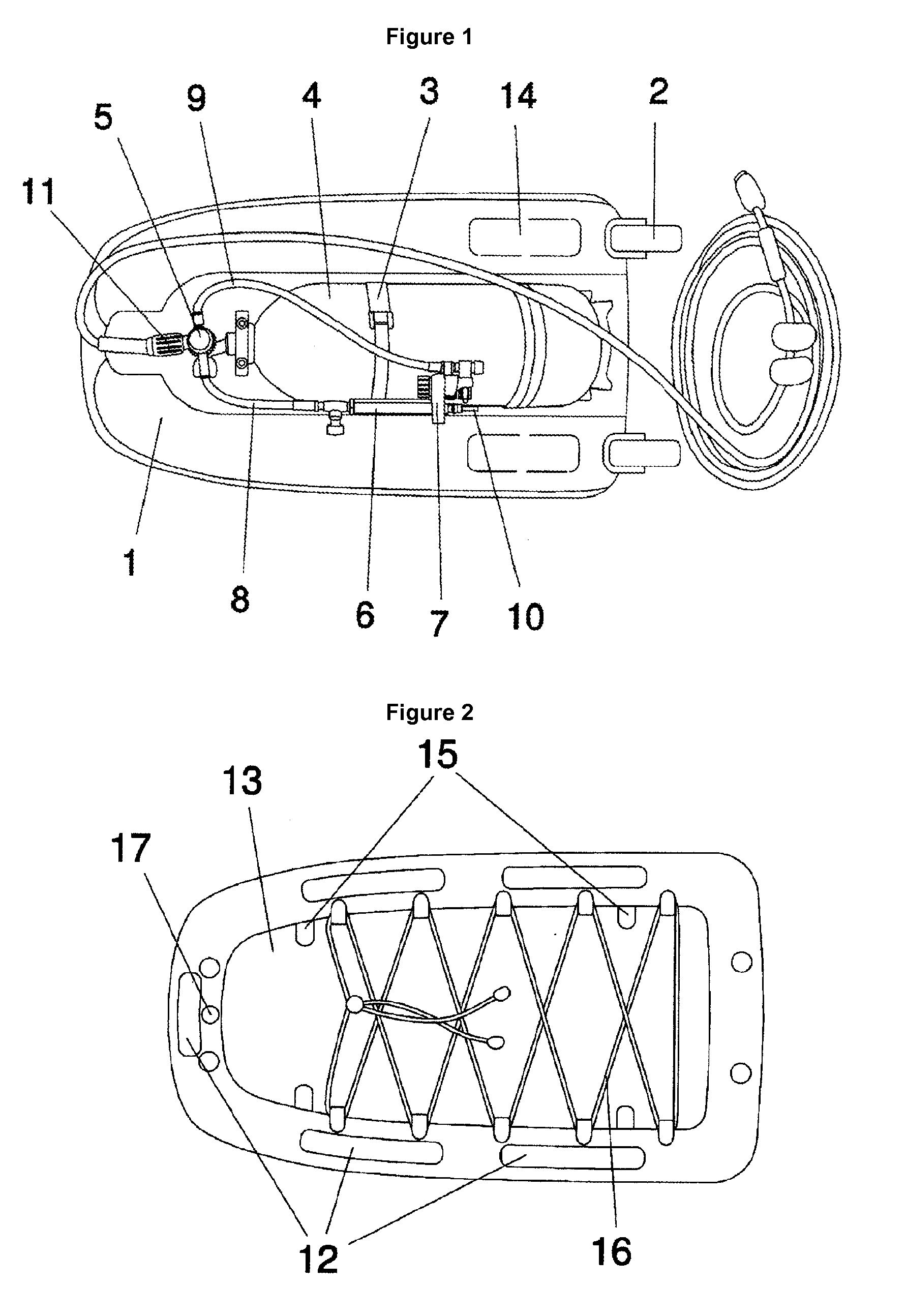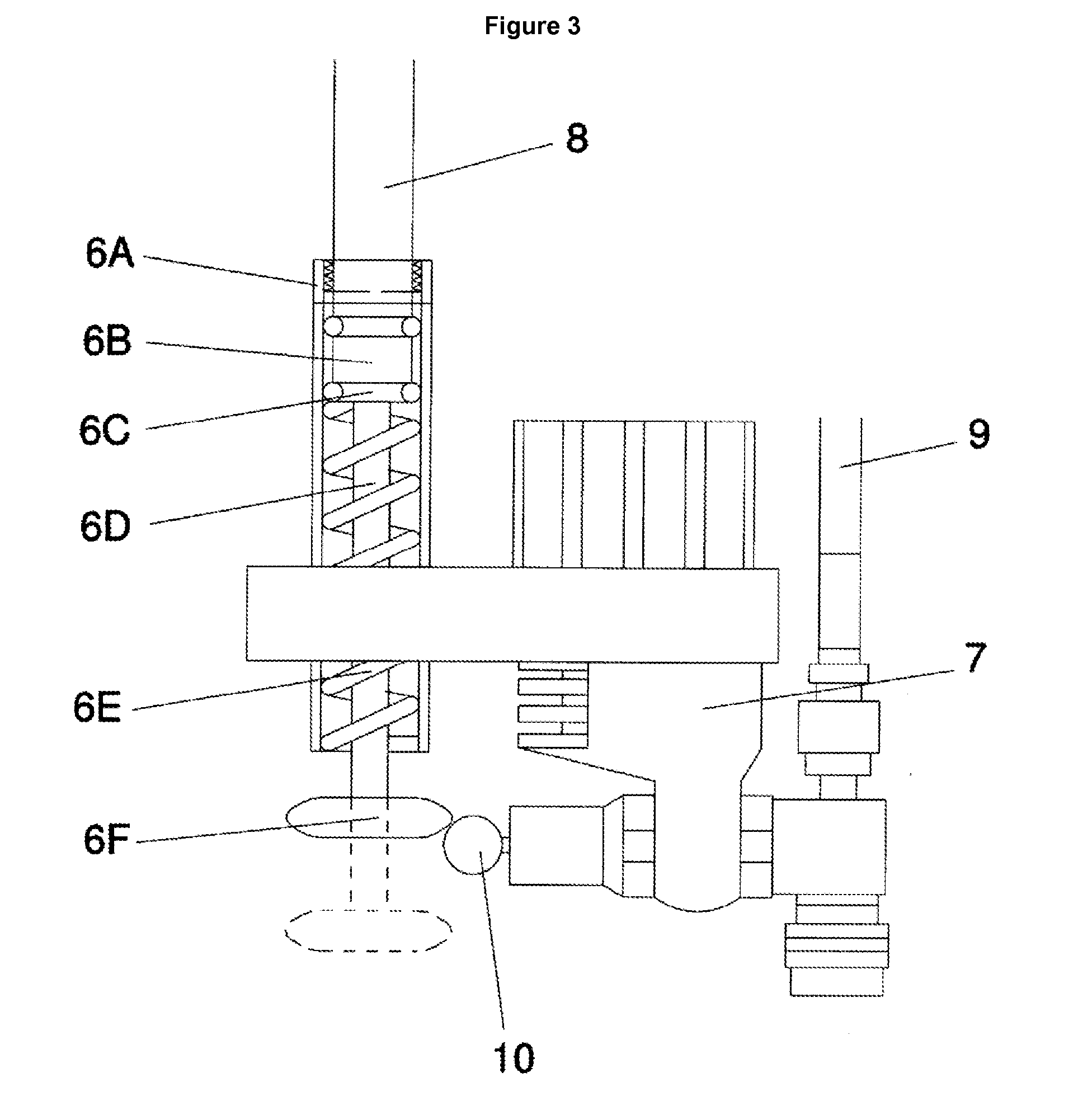Self-contained diving system with an automatic alarm
a diving system and automatic alarm technology, applied in waterborne vessels, transportation and packaging, underwater equipment, etc., can solve the problems of not being able to move around with the diving system, not being able to bring changes to the basic characteristics of the system, and feeling discomfort which takes a lot of effort to overcome, so as to facilitate rotation, prevent wear, and facilitate movement.
- Summary
- Abstract
- Description
- Claims
- Application Information
AI Technical Summary
Benefits of technology
Problems solved by technology
Method used
Image
Examples
Embodiment Construction
[0017]The invention relates to a “self-contained diving system with an automatic alarm”, comprising various elements, a great many of them designed exclusively for it, which, when properly interconnected, combine to produce a unit suitable for diving which enables this sport to be enjoyed more easily, comfortably and safely than any such state of the art systems. It can be used by any kind of person and is suitable for those who, because of their constitution and build, would find it difficult to go diving with conventional diving equipment.
[0018]We may divide the elements comprising the equipment of the “self-contained diving system with an automatic alarm” into three differentiated parts: 1—Those which are attached to the mobile float the aerohydrodynamic shape of which facilitates its movement through the water. 2—Those which carry the flexible floating air supply hoses and which also act as depth limiters, and 3—Those which are incorporated in the belt worn by the users.
[0019]1....
PUM
 Login to View More
Login to View More Abstract
Description
Claims
Application Information
 Login to View More
Login to View More - R&D
- Intellectual Property
- Life Sciences
- Materials
- Tech Scout
- Unparalleled Data Quality
- Higher Quality Content
- 60% Fewer Hallucinations
Browse by: Latest US Patents, China's latest patents, Technical Efficacy Thesaurus, Application Domain, Technology Topic, Popular Technical Reports.
© 2025 PatSnap. All rights reserved.Legal|Privacy policy|Modern Slavery Act Transparency Statement|Sitemap|About US| Contact US: help@patsnap.com



